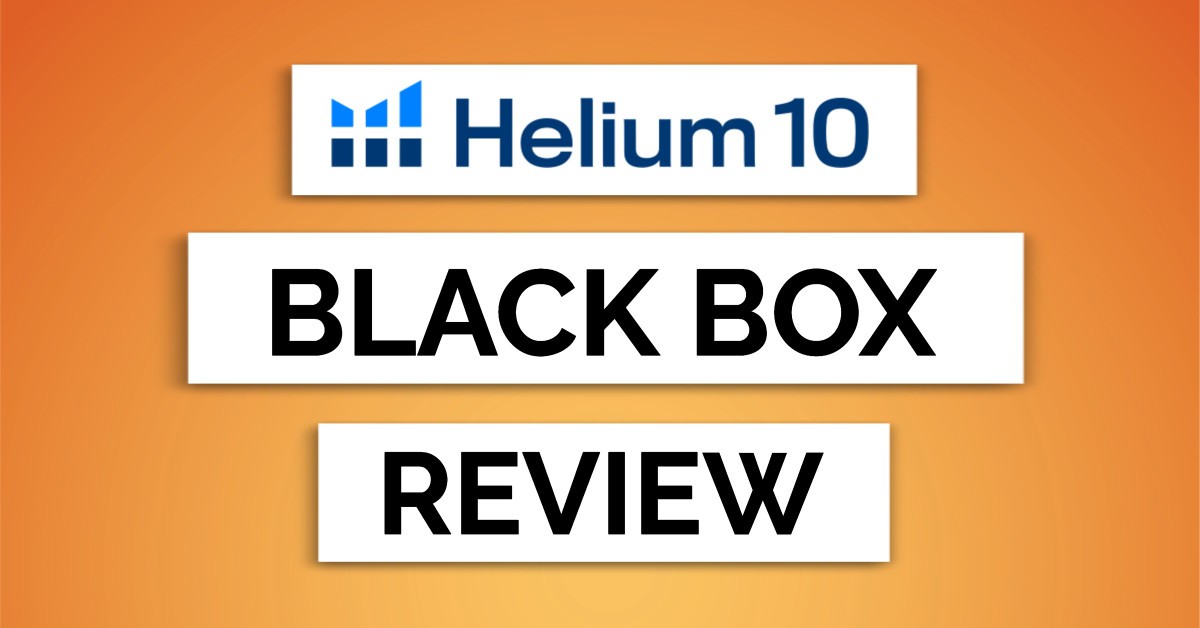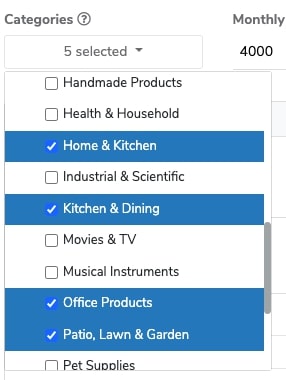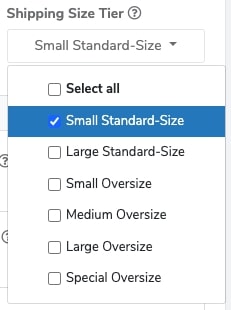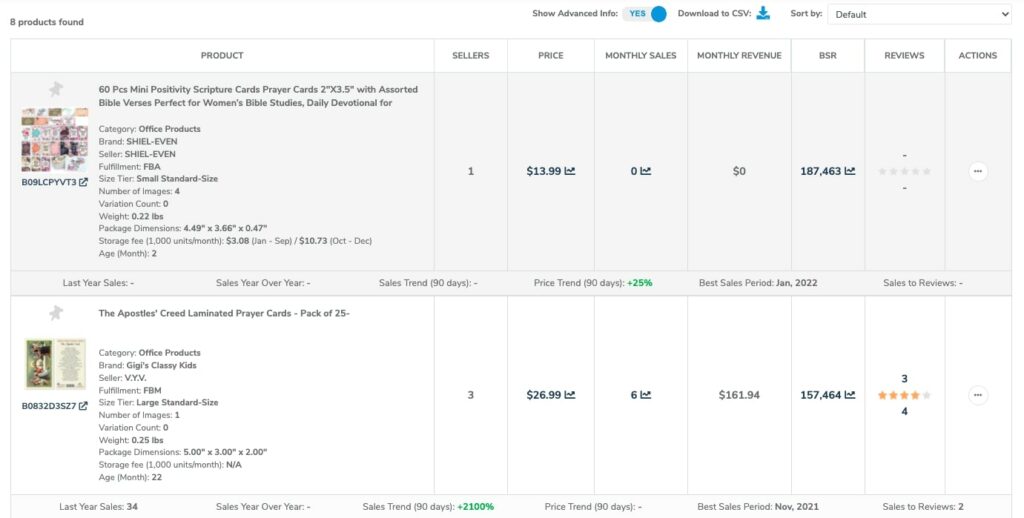How to find trending products on Amazon?
When it comes to Amazon FBA product research, there’s one thing you should keep in mind (and, actually, this is what experienced sellers would advise you) – first, find a niche, then look at the products.
You can say almost all categories on Amazon are saturated, meaning there are already lots of products, therefore there is too much competition that makes it impossible to successfully sell your product.
That is enough reason to start looking more at niche products. But the question is – how to find a niche product with demand and make a good profit out of it?
In this blog post, you will find a Helium 10 Black Box tutorial. Black Box is an Amazon product research tool that helps you to find product opportunities from a database of over 450+ million products. It has advanced filters that let you search for a product by category, monthly revenue, monthly sales, price, review count, review rating, shipping tier size, best sellers rank, best sale period, and more – everything you need to find the one.
Continue to read to find some tips for using Helium 10 Black Box!
What is Helium 10 Black Box
Even though you have the best tools for your Amazon product research, don’t forget – you’re not the only one using them. That means – if you find a winning product, probably 20-30 other sellers found the same one as well.
This is the reason why you must understand and properly use the filters inside Black Box. So let’s quickly go through all of them and see how to use Helium 10 Black Box.
Let’s start with categories. It’s the first step to start defining a product that you would really want to sell. You can choose from 29 categories so, really, the options are (almost) endless.
Monthly revenue – here you don’t want to go too crazy. Of course, everyone wants to sell products that generate lots of money, but be realistic here – the more profitable a product is, the more competition it has.
So the good place to start is around $4000 – $13000 a month.
For the product price, the sweet spot is somewhere between $10 and $30 dollars.
Review count – this is what makes it hard to beat the competition. You might want to stay under 100 reviews but it also depends on the certain category and the product itself. For example, if another seller has 170 reviews with the same product, that won’t necessarily be a deal-breaker. If there are not many products like this, you still have a good chance to enter the market and overperform the competition.
Just remember – you wouldn’t want to compete with products with thousands of reviews that are impossible to beat!
Review rating – with this one, it can also get a bit tricky. Don’t aim at 5-star reviews because it can be hard to compete with a “perfect” product but, at the same time, don’t go lower than 3 – if it’s around this rating, you might want to analyze the reviews and see what people are complaining about. Maybe there’s an opportunity for you to give customers something better?
Shipping tier size – this is something VERY important yet often overlooked. When you’re calculating your profit margins, there are many fees to take into consideration, some of them being related to product size. The bigger a product, the more it will cost to store and ship it.
If that’s your first product, our recommendation would be to go with the small-standard size as it’s going to cost you less money and hassle.
If you set all these filters in the right way, it would be already enough to do your initial product research. However, if you look at it more seriously, you might want to explore the advanced filters the tool has to offer.
These filters give you more precise information on how has a product performed over the last 90 days or even 12 months, including:
- Sales change over a year – gives you the estimate on how has the sales performance changed over the last 12 months.
- Price change – how has the price changed over the last 90 days.
- Sales change – just the same as the first in this list, it gives you the percentage of how have sales been changing, just this time over the period of 90 days.
- Best sales period – shows which month a product performed the best
- Sales to reviews – estimates the ratio of monthly sales to the total number of reviews.
- Monthly sales – units sold over the last 30 days.
- Best Sellers Rank (BSR) – every product on Amazon has its ranking based on how well or bad it’s selling. The lower the number, the better.
- A number of sellers – the number of sellers that are already selling this product.
- Fulfillment – methods of shipping and storing your products. You can either do it yourself (FBM – fulfillment by merchant) or give this task to Amazon (FBA – fulfillment by Amazon).
- The number of images – how many images does a product listing has.
- Variation count – how many variations a product has (most likely it’s going to be color variations).
- Weight – how much does a product and its package weigh in total.
- Title keyword search – here you can enter the exact keyword phrase that is used for searching for this product.
- Exclude title keywords – add the words that you don’t want your products to show up for.
- Brand search – you can search for a product of a certain brand.
- Exclude brands – just the opposite of the previous one – you can specify the brands that you don’t want to show up.
- Seller search – search for products one certain seller has.
- Exclude seller – this is also self-explanatory. You can enter the names of the brands that you don’t want to show up.
This is what they look like inside Helium 10’s dashboard:
Let’s say we want to run research based on just basic filters since many sellers would do the same. And even with that, we can find pretty good options to choose from.
For example, this notebook is for journaling. It’s priced at $12.99, has 422 monthly orders, and more than $5k in revenue. What caught the attention here is the number of BSR – it’s only a bit over 9k which, compared to the other products on the list, is the lowest one.
And don’t forget the most important thing here – the number of reviews! This exact one has 42 reviews and a review rating of 4.3. What does it mean? It means it wouldn’t be nearly impossible to outperform this exact product and, apparently, people like it. So based on what we see here, this one might be a pretty good product to look into more.
Besides all of this information, you also get to know the following:
- Product Title
- ASIN
- Category
- Seller
- Fulfillment Type
- Product Size Tier
- BSR
- Average Monthly Sales
- Average Monthly Revenue
- Product Price
- Reviews
- Number of Sellers
- Actions Available
Even though there are a lot of things to process, everything is displayed in a very user-friendly way so it’s easy to grab the information at one glance.
Black Box for niche and competitor research
Let’s say you want to stick with the product you just found. How to know how fierce the competition would be?
With Black Box, you are also able to find your competitors based on the search phrase that you might want to rank for.
In this example, we’re going to use the same product that we just found and see what products are showing up for the “prayer cards” search phrase:
Apparently, there are only 8 sellers that have a product similar to ours and, based on what we see, the competition is an easy one. This just double-confirms our initial product idea so you definitely don’t want to skip this step when using Black Box.
Black Box for keyword research
In the same way, you would do product research using Black Box, you can also do keyword research as well. Let’s say we use the same filters as before:
Let’s take a look at what we found:
By doing this keyword research, you might get some product ideas as well as find long-tail keywords. But for this one, you might better use their Cerebro or Magnet tools.
Next steps in Amazon product research
So at this point, you might have already found a potential product to sell. Now what?
That’s simple – just click on the product you chose – that will open its product listing on Amazon – and run some more research using Helium 10 Chrome Extension. With this tool, you can pull out literally all data that you need, such as Amazon product trend analysis, and best-performing keywords as well as calculate your profit margins.
You can read more about Black Box on the Helium 10 website.
If you eventually decide to sign up for Helium 10, use these coupon codes to save some money:
- ORANGE10 for 10% off any plan lifetime
- ORANGE6M20 for 20% off the first 6 month
Apply any of these at the checkout when signing up.











